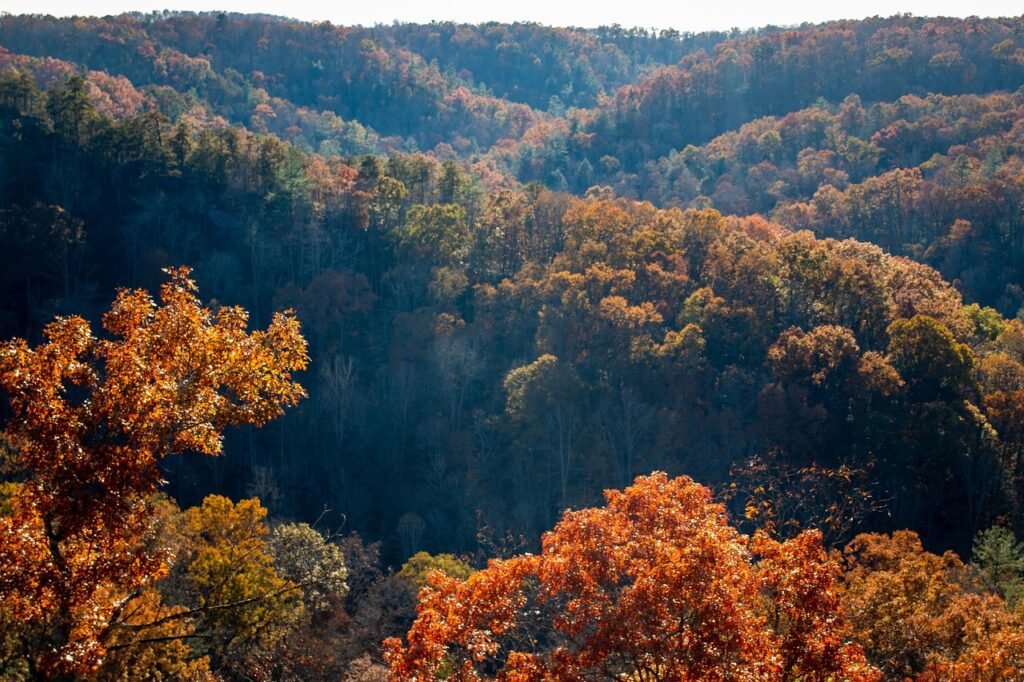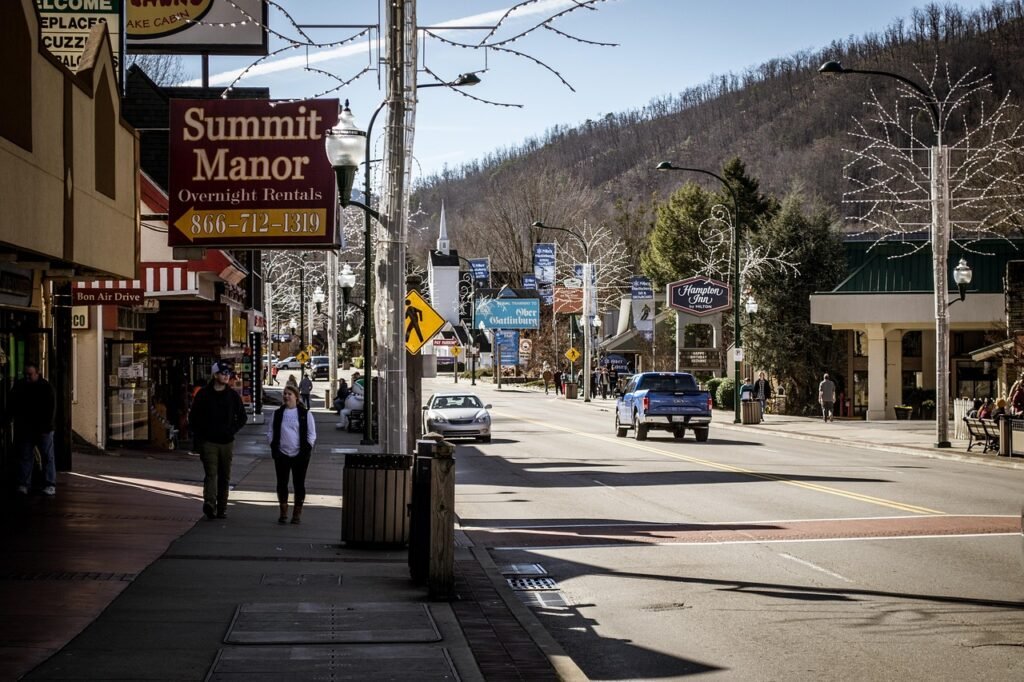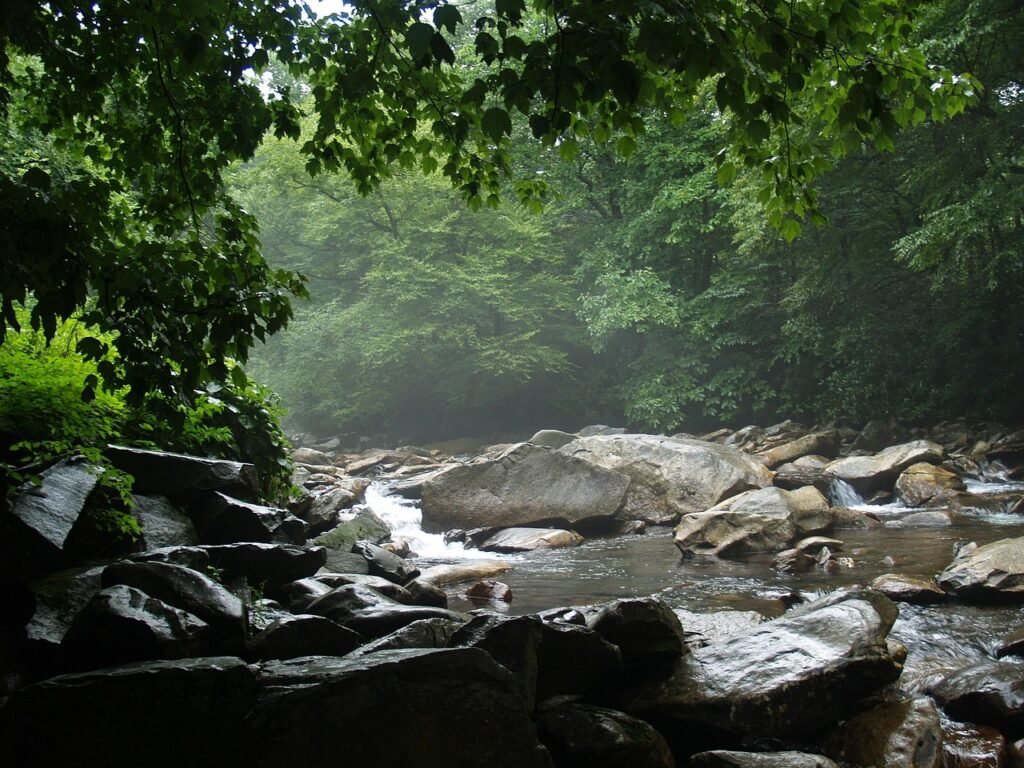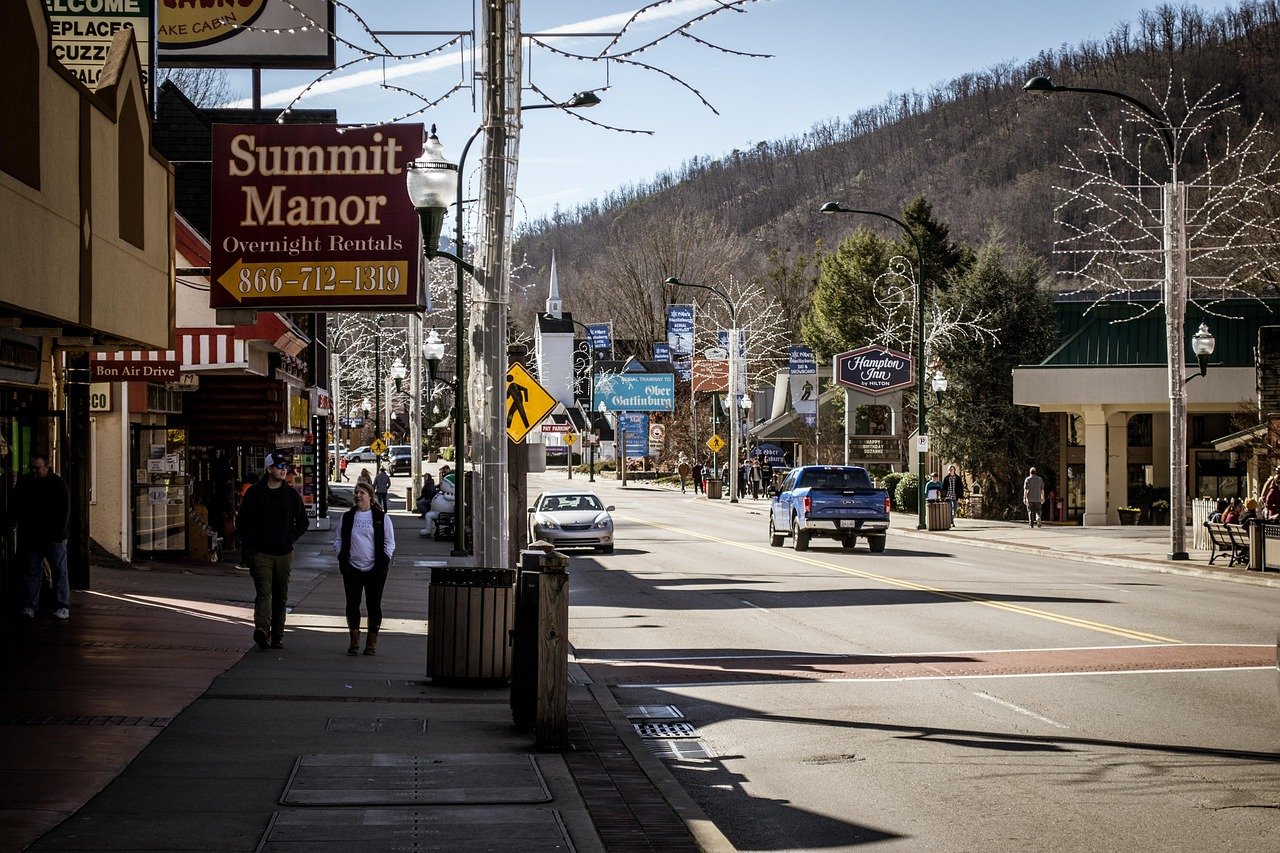Gatlinburg Tennessee Through History
Have you ever wondered how Gatlinburg grew from a few mountain clearings into one of the most visited mountain towns in the United States?
Gatlinburg Tennessee Through History
You’re about to follow Gatlinburg’s story from the earliest indigenous presence through pioneer settlement, economic changes, the creation of the Great Smoky Mountains National Park, modern tourism, and recent challenges and recovery. This history shows how geography, culture, and events shaped the community you see today.
Why Gatlinburg’s history matters to you
Understanding Gatlinburg’s past gives you context for the town’s architecture, traditions, and attractions. It helps you read the landscape—why certain roads follow old paths, why craft traditions persisted, and why preservation and tourism are so central to local life.
The land before European settlement
Long before settlers arrived, the mountains and valleys that make Gatlinburg were part of the homeland of indigenous peoples. The Smoky Mountains provided routes, hunting grounds, and seasonal camps.
You’ll find evidence that Native American peoples moved through these mountains for centuries. They used the ridges and gaps for travel and gathered plant and animal resources from the diverse ecosystems.
The Cherokee and other indigenous connections
The Cherokee are the most commonly associated indigenous nation with this region by the time Europeans arrived. Their knowledge of the land, including trails and seasonal patterns, shaped early routes that later settlers used.
If you pay attention to place names and old trails, you’ll notice Cherokee influence on local geography. Even though many tribes were displaced over time, the land remembers that earlier presence.
Early European-American settlement and pioneer life
European-American settlement in the area that became Gatlinburg began in the late 18th and early 19th centuries. Pioneers were drawn by valleys suitable for small-scale farming, water sources, and timber.
You’ll picture subsistence farms, small mountain clearings, and families living widely spaced lives. Roads were little more than widened paths that followed creek beds and gaps through the mountains.
White Oak Flats becomes home
Before it had a formal name, the valley that became the town was commonly called White Oak Flats, a reference to the trees that grew there and the flat meadow-like areas in the narrow valley.
When you look at old maps or read early accounts, you’ll see how natural features—flat areas between steep slopes, streams, and springs—determined where people built homes and mills.
The Gatlin name: how the town got its identity
The modern name “Gatlinburg” comes from Radford E. Gatlin, a storekeeper and postmaster in the mid-19th century whose name became associated with the post office and thus the community. When a post office was established, it cemented the locality’s identity in federal records.
Accounts about Radford Gatlin’s life vary, and local oral histories add color to the story. What you should take away is that small mountain communities often took names from prominent local merchants, postmasters, or landowners, and those names became permanent through postal and government use.
19th-century economy: farming, logging, and moonshining
Through the 1800s, the mountains supported a mixed subsistence economy. You’ll see families raising corn, keeping a few sheep or cattle, making charcoal, and cutting timber for local use and market.
Timber and the ability to produce certain goods sometimes connected mountain families to markets beyond the valley. When roads improved, you’ll notice an increase in logging and shipment of lumber to growing cities.
Self-sufficiency and mountain crafts
You’ll encounter the tradition of self-sufficiency in early crafts such as quilting, woodworking, and basket-making. These skills passed down through generations and eventually fed into the craft economy that would become central to Gatlinburg’s identity.
When you visit craft shops today or meet artisans, you’re experiencing an evolved form of that mountain tradition of making things by hand for family and community.
Informal economies and moonshining
Isolation and limited cash economies meant some locals supplemented incomes with informal activities. Moonshining—distilling spirits illegally to avoid taxes—was practiced in many mountain regions, and the Smokies were no exception.
If you read local stories, you’ll often find tales about secret stills and creative methods of moving product through the mountains. Those stories have become part of cultural memory and folklore, and you’ll sometimes see them represented in museums and tours.

Transportation and access: roads, rail, and the changing valley
For much of its early existence, Gatlinburg remained relatively isolated. Roads were rough and seasonal, and access to larger markets required long, difficult trips.
As travel infrastructure improved in the late 19th and early 20th centuries, you’ll notice how improved roads and automobile travel made the valley more accessible, setting the stage for tourism and a shift in the local economy.
Road improvements and the impact on daily life
When roads were improved, you’ll understand how that shifted daily life: better access to goods, easier transport of timber, and greater movement of people. Improved transport also meant a steady arrival of visitors, hunters, and later tourists.
You’ll see that each new road or paved route reduced isolation and increased economic opportunity, but also brought outside influences that changed the valley’s cultural landscape.
The rise of tourism and the Great Smoky Mountains National Park
Tourism emerged slowly at first, with visitors drawn to the mountain scenery and cooler summer temperatures. The major turning point came with the creation of the Great Smoky Mountains National Park in the 1930s, which transformed Gatlinburg’s economy.
If you want to understand modern Gatlinburg, you must look at how public investment in the park reshaped private land use, displaced some residents, and redirected local labor toward serving visitors.
How the national park came to be
The Great Smoky Mountains National Park was created through a combination of federal legislation, state involvement, private donations, and land acquisition in the early-to-mid 20th century. The park’s establishment was part of a broader movement to conserve scenic and natural areas and to create accessible public recreation areas.
You’ll note that park creation often required complex negotiations and sometimes difficult relocations. The park’s presence would create the primary economic stimulus for the region: millions of visitors seeking natural scenery.
Economic transformation: from extraction to hospitality
When the park opened, many locals shifted from logging or small-scale farming to tourism-related jobs: hospitality, crafts, retail, and guiding. The valley’s scenic value became an economic resource in itself.
If you’re thinking about how communities change, Gatlinburg is a clear example: the local economy moved from extracting timber and living in relative isolation to providing experiences and services for visitors from around the world.
Cultural preservation and the arts and crafts tradition
As tourism grew, so did interest in “authentic” Appalachian culture. Craftspeople began selling quilts, pottery, woodcarvings, and other handmade goods to visitors, creating a market that allowed those traditions to persist and evolve.
You’ll see that the Gatlinburg Arts & Crafts Community and similar initiatives provided a channel for artisans to reach customers, preserving skills that might otherwise have faded away.
The Crafts Community and artisan identity
The 8-mile Arts & Crafts Community became a recognized hub where you could meet artisans and see traditional techniques. This community helped formalize craft production as a stable economic activity.
If you visit, you’ll notice a blend of traditional forms and contemporary reinterpretations. Craftspeople often teach workshops, allowing you to connect directly with skills and stories.
Attractions and development through the 20th century
As the 20th century progressed, Gatlinburg developed a range of attractions geared to tourism: historic sites, observation points, family attractions, and seasonal events that together built the town’s brand as a gateway to the Smokies.
You’ll find that the town grew in a way that mixed natural attractions with commercial enterprises aimed at families, outdoor enthusiasts, and travelers seeking relaxation and novelty.
Family attractions, scenic viewpoints, and recreation
You can visit viewpoints that take advantage of the mountain scenery, ride scenic lifts or chairlifts, and access trailheads into the national park. Recreational infrastructure—trails, picnic areas, and interpretive centers—give you many ways to enjoy the mountains.
If you prefer quieter experiences, you can find historic buildings and craft shops. If you prefer more commercial entertainment, you’ll find restaurants, arcades, and themed attractions.
Winter recreation and year-round appeal
Gatlinburg expanded into year-round recreation with facilities that offered skiing, ice skating, and winter festivals. That helped stabilize the local economy by attracting visitors in all seasons.
You’ll note that year-round amenities require infrastructure—lodging, restaurants, and services—which further developed the town’s visitor economy.

The Great Smoky Mountains National Park: visitor numbers and preservation
The national park is consistently one of the most visited in the United States, and its popularity feeds directly into Gatlinburg’s visitor economy. Park management emphasizes conservation, trail maintenance, and visitor education.
When you go to the park, you’ll benefit from interpretive programs and well-maintained trail systems. You’ll also find that balancing preservation with heavy visitation is an ongoing challenge.
Visitor management and conservation
Park managers work to manage foot traffic, maintain trails, and preserve habitats while providing access. The park’s success has sometimes created the paradox of popularity: heavy visitation can stress the very landscapes people come to see.
If you care about conservation, you’ll appreciate programs that encourage Leave No Trace practices, guided hikes, and education that helps reduce visitor impact.
The downtown transformation and modern Gatlinburg
Gatlinburg’s downtown evolved into a high-traffic pedestrian and commercial corridor filled with shops, restaurants, attractions, and lodging. This concentration of visitor services created both economic opportunities and strains, such as traffic, parking, and infrastructure needs.
You’ll find that downtown Gatlinburg offers a mix of local artisan shops and national chains, family-oriented attractions, and a range of lodging options from motels to cabins.
Managing growth and community character
You’ll notice ongoing conversations in the community about maintaining a balance between growth and character. Residents, business owners, and planners work to preserve mountain charm while providing the amenities visitors want.
If you’re observing these tensions, you’ll see how zoning, building codes, and tourism initiatives influence the town’s appearance and services.
Natural disasters and resilience: the 2016 wildfires
In November 2016, wildfires swept through parts of the Smokies and the Gatlinburg area, causing fatalities and extensive property damage. The community’s response and recovery have been an important chapter in recent history.
You’ll witness evidence of that resilience in rebuilt areas, memorials, and strengthened emergency planning and fire mitigation efforts.
Recovery, rebuilding, and lessons learned
After the fires, locals and authorities focused on rebuilding responsibly, improving evacuation routes, and updating emergency systems. The tragedy led to renewed emphasis on forest management and community preparedness.
If you visit today, you’ll see signs of recovery, but you’ll also see how the event changed local planning and community awareness about wildfire risk.
Social history: families, religion, and education
Gatlinburg’s social fabric included tightly knit families, churches that served as social centers, and one-room schools that gradually gave way to consolidated schooling. These institutions shaped community networks and local norms.
You’ll find that family histories are often well-recorded in local archives and oral histories, which provide a window into everyday life over generations.
Faith and community institutions
Churches and community halls were often centers for social life, mutual aid, and organizing community responses to challenges. They helped maintain social cohesion in a frontier-like environment.
If you attend a local service or event, you’ll see how traditions persist and adapt in modern settings.

The role of conservationists, philanthropists, and federal policy
The establishment of the national park involved not only federal action but also private philanthropy and state cooperation. Prominent conservationists and donors played roles in land acquisition and park establishment.
You’ll notice that the intersection of conservation policy and local livelihoods was complex: some landowners sold to the park willingly, others were reluctant, and negotiations could be contentious.
Long-term implications for land use
Once the park was established, it prevented large-scale development within its boundaries but also shifted development pressures to gateway communities like Gatlinburg. That dynamic shaped regional planning in the decades that followed.
If you study regional land-use patterns, you’ll see that preserving the park’s natural character also concentrated commercial development in town centers.
Heritage tourism and authenticity
Gatlinburg’s economy now relies heavily on heritage tourism—the idea that visitors pay to experience local traditions, crafts, and landscapes. That creates incentives to preserve cultural forms, but also to adapt them for tourist tastes.
You’ll observe that authenticity is often a blend of old and new. Craftspeople might use traditional designs with contemporary materials, and historic buildings may be repurposed to serve modern needs.
Balancing preservation with commercial needs
Maintaining authentic cultural elements while meeting visitor expectations is an ongoing balancing act. Local organizations help promote genuine craftsmanship and protect historic structures.
If you value authentic experiences, you’ll benefit from seeking out accredited craftspeople, small museums, and guided programs that emphasize heritage accuracy.
Community planning and future challenges
Gatlinburg faces challenges common to many tourist towns: traffic congestion, affordable housing for workers, balancing tourism with resident quality of life, and environmental threats like wildfires and changing climate patterns.
You’ll see planning initiatives that address these issues—public transportation ideas, housing programs, and infrastructure improvements designed to manage peak-season surges.
Strategies for sustainable tourism
Community leaders and stakeholders sometimes promote strategies such as spreading visitation beyond peak seasons, investing in environmentally sensitive infrastructure, and supporting local businesses that provide year-round employment.
If you care about sustainable travel, you can support those goals by choosing local guides, staying in locally owned lodging, and visiting outside peak months where possible.
Notable landmarks and places of interest
The town and surrounding park feature many sites where you can connect with history, culture, and nature. Below is a table that highlights notable places and why they matter:
| Place | Why it matters | What you can do there |
|---|---|---|
| Sugarlands Visitor Center (nearby) | One of the main park visitor centers with natural history exhibits | Attend ranger programs, learn about local ecology, begin hikes |
| Arts & Crafts Community | Historic concentration of artisans and studios | Meet artists, buy handmade goods, take workshops |
| Ober Gatlinburg area | Winter recreation and mountain views | Skiing, snow tubing, and year-round family activities |
| Mountain scenic overlooks | Provide classic Smoky Mountain vistas | Photograph sunrise/sunset, short walks |
| Historic cabins and log structures (various) | Examples of early mountain architecture | Visit preserved sites to learn about pioneer life |
You’ll find that visiting these places gives you tactile connections to the region’s history and living culture.
Timeline of major events
Here’s a concise timeline you can use to orient yourself to key moments in Gatlinburg’s development:
| Period | Event |
|---|---|
| Pre-1800s | Indigenous use of mountain routes and seasonal camps, especially by Cherokee and other groups |
| Early 1800s | Pioneer settlement and small-scale farming; area known as White Oak Flats |
| Mid-1800s | Establishment of a post office and adoption of the Gatlinburg name (associated with Radford Gatlin) |
| Late 1800s – early 1900s | Logging and subsistence continue; roads slowly improve |
| 1930s | Push to create the Great Smoky Mountains National Park; land acquisitions accelerate |
| 1940s onward | Park opens and tourism begins to grow as the major economic driver |
| Mid-late 20th century | Expansion of attractions, craft economy, and infrastructure supporting tourism |
| 2016 | Severe wildfires damage parts of Gatlinburg area; significant recovery and rebuilding efforts follow |
| 21st century | Focus on sustainable tourism, conservation, and heritage preservation |
You’ll find that this timeline helps place local stories and sites into a broader historical framework.
How you can engage with Gatlinburg’s history
Whether you’re a visitor or a resident, there are many ways to connect with and support Gatlinburg’s historic and cultural resources.
You can attend ranger-led hikes, visit craft studios, read oral histories at local museums, and participate in community events that celebrate Appalachian heritage. Volunteering for trail maintenance or conservation programs is another way to give back.
Tips for meaningful visits
- Look for small, independently owned craft shops to support authentic artisans.
- Take a ranger program or guided historic walk to learn local context.
- Visit off-peak times to reduce crowding and enjoy a quieter experience.
- Respect private properties and park rules—many historic cabins are on preserved land or private lots.
If you follow these tips, you’ll get a deeper sense of the place and its people.
Stories and oral histories that bring the past alive
You’ll discover that oral histories and family stories are central to understanding Gatlinburg. Residents pass down tales of crop seasons, mountain remedies, festivals, and community solidarity.
Local historical societies often collect these stories. If you’re curious about a family name or a place, you can often find recorded interviews, photographs, and genealogical records that reveal surprising connections.
How to access local history resources
Many resources are available through visitor centers, local museums, historical societies, and online archives. You can request oral history recordings, look at old maps, or read collections of family letters and photographs.
If you’re researching family or community history, start with the local historical society or the national park archives, which often hold land records and early photographs.
The future: resilience, stewardship, and cultural continuity
Gatlinburg’s past shows resilience in the face of isolation, economic transition, and natural disaster. Looking forward, the community is working to preserve natural resources, maintain cultural traditions, and ensure that tourism benefits both visitors and residents.
You’ll see that stewardship of the park and investment in sustainable infrastructure are vital for the town’s longevity. Community efforts aim to make sure that the next generation can both live in the valley and welcome visitors in ways that honor place and people.
How you can contribute to a positive future
When you visit or engage with Gatlinburg, you can help by supporting local businesses, following conservation best practices, and respecting the community’s cultural and environmental priorities.
If you make thoughtful choices—like selecting locally owned lodging, shopping at artisan studios, and participating in educational programs—you’ll be part of a sustainable approach that benefits residents and preserves the region for future visitors.
Final thoughts: reading the layers of Gatlinburg
You’ve seen that Gatlinburg’s history is layered: indigenous pathways, pioneer adaptability, extractive economies, the transformative creation of a national park, cultural preservation through crafts, the rise of tourism, and contemporary challenges and recovery.
When you walk Gatlinburg’s streets, hike its trails, or meet local artisans, you’re experiencing a landscape shaped by many hands and times. The story continues, and your choices as a visitor or resident help write its next chapters.
If you stay curious and respectful, you’ll gain a richer, more meaningful connection to this mountain town and the wider Great Smoky Mountains region.
